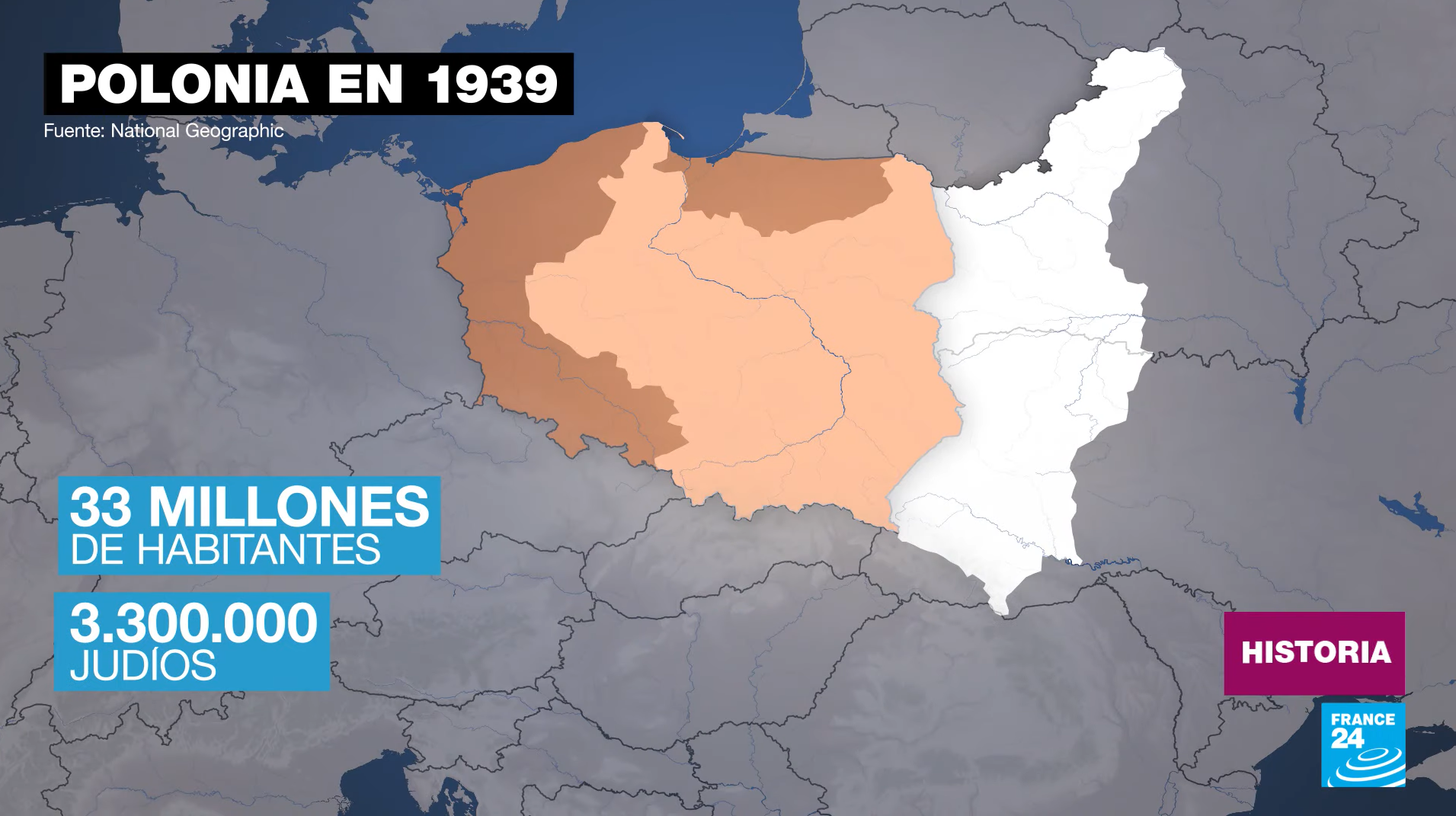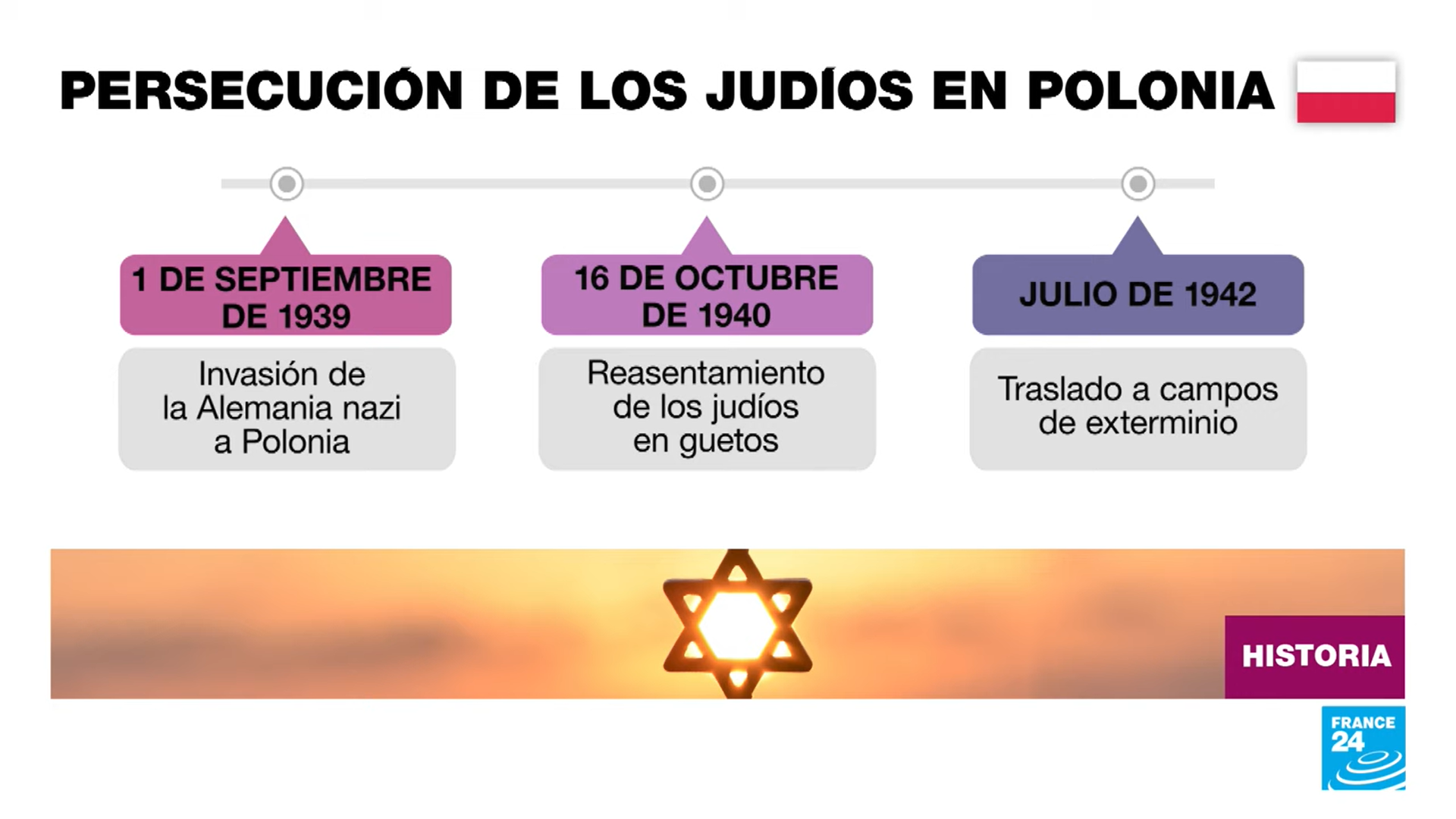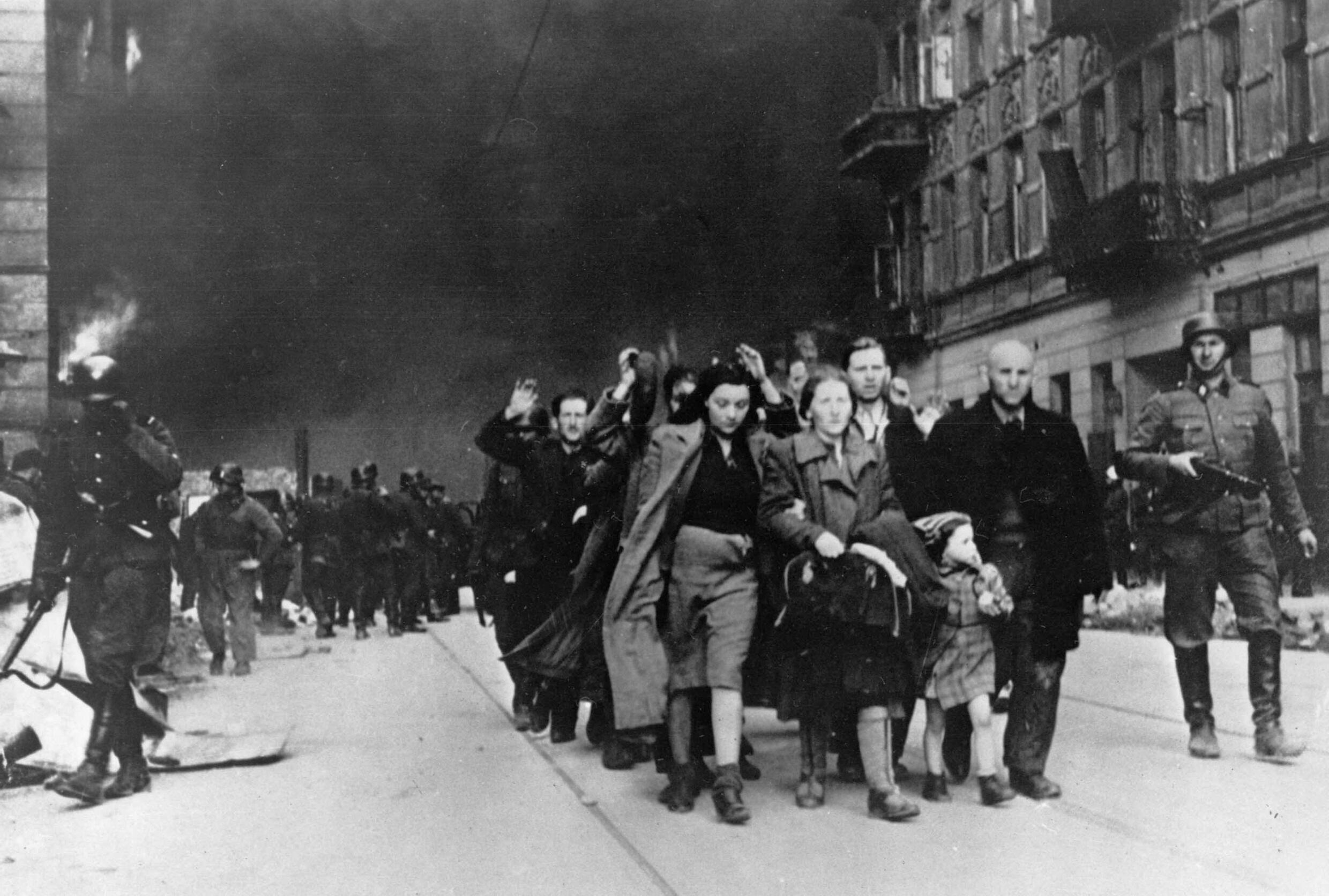On April 19, 1943, fighting began between the remaining Jews who inhabited the Warsaw Ghetto and the forces of Nazi Germany. The goal of the Jewish fighters was to prevent further deportation to the death camps and to confront the invader and the person responsible for their annihilation as an ethnic minority. The fighting went on for almost a month despite the fact that the Jewish militias hardly had any weapons, something that turned this cause into a heroic resistance against Nazism that, although it had a tragic end for the Jewish population, went down in history.
The Warsaw Ghetto uprising, one of the most tragic episodes of World War II in Poland, celebrates its 80th anniversary this April 19. An unprecedented fight against the occupation of Nazi Germany that was the last breath of resistance of the Polish Jewish population, a community that at that time had been exterminated for years and that, after this event, practically disappeared from Poland.
Before World War II, Poland was a very different country than it is now. The Polish state was a young nation that had established itself as a democracy after the First World War. Its borders were very different from the current ones, due to the fact that they were located further to the east and had parts of present-day Ukraine, Belarus and Lithuania.
In addition, its population, unlike now, was deeply heterogeneous, with different ethnic groups and religious beliefs in its territory.
Poland, a heterogeneous country with a significant presence of Jews
By 1939, it is estimated that Poland had some 33 million inhabitants, one of the most populous countries in Europe at the time. Most of them were Catholics, as today. However, 10% of the population, some 3,300,000 people, were of Jewish origin.

This meant that Poland was the European nation with the highest percentage of Jewish population in the entire continent. Data that increased in the cities, since they were a mainly urban group. For example, only in Warsaw, there were about 350,000 Jews, or what is the same, 30% of the inhabitants of this city. Data that made the Polish capital the second city in the world with the most Jews, only behind New York.
These people had been in Poland for nearly eight centuries. and they were part foundation of Polish society. Many worked, even, as professions with high purchasing power at that time. Among them, lawyers, teachers, bankers or jewelers, who occupied high levels within the bourgeoisie.

But his situation began to change the September 1, 1939. That day the invasion of Poland by Nazi Germany began and, although the Polish government tried to resist with the help of its Catholic and Jewish citizens, it ended up collapsing after a few weeks.
late 1940’sand after having lost practically all their rights as citizens, these Jews were resettled in ghettos in cities such as Warsaw, Krakow, Lublin or Lodz and, from July 1942, They were transferred to extermination camps such as Auschwitz or Treblinka.

From the Warsaw Ghetto to extermination
The one in Warsaw was the largest ghetto in all of Europe. At its peak, it housed almost 400,000 Jews from the capital and its surroundings in a space of barely three square kilometers, where they lived in subhuman conditions of overcrowding and the proliferation of diseases that caused the death of thousands of people. Especially the elderly and children. Added to this was the lack of food and extreme working conditions.
These people lived in different parts of Warsaw, but they lost their houses to live in a few buildings. The ghetto was divided into two parts, a larger one where people able to work lived and a smaller one where people who would first go to extermination camps such as Treblinka, on the outskirts of Warsaw, were located.
250,000 ghetto inhabitants were deported between July and November 1942 to this camp with little resistance, as they thought they were going to work. Treblinka, unlike Auschwitz, was not a concentration camp, it was just an extermination site and the people who came to it were automatically killed.

The fight for the defense of the Jews in Poland
It is in this context that the remaining population of the ghetto, which was about 60,000, in the absence of news from their deported relatives and friends and information from Polish spies, realized that they were being exterminated and began to organize themselves.
From the beginning of 1943 two Jewish organizations took control: the leftist Jewish Combat Organization and the rightist Jewish Military Union. Both maintained a relationship with the Polish Catholic resistance and they began to supply the ghetto with weapons and explosives.
The primary objective was to prevent further deportations and end Nazi control within the ghetto. Something that they achieved in those first six months of the year and that led Berlin to send thousands of soldiers to retake the ghetto, starting the fighting on April 19, 1943.

The Jewish resistance surprised the Germans, who were forced to destroy house by house and suffered numerous casualties during the 27 days that the uprising lasted. Although the Jewish organizations were ill-equipped, the fact that most of the remaining Jews in the ghetto were young men, whose families had been murdered, made them fight with nothing to lose.
In addition, the bunker system and guerrilla warfare put the German forces to the limit, which had more than 1,000 deaths. Although, finally, on May 16, General Jurgen Stroop ended the operations.
In all, 7,000 Jews died in the fighting and another 6,000 committed suicide or died in the fires. He The rest, some 40,000, would be sent to Treblinka to be murdered in gas chambers.

The Germans celebrated the “end” of the Jewish presence in Warsaw with the destruction of the largest synagogue in the capital. Nazi Germany was responsible for the extermination of 90% of the Jewish population living in Poland and the few survivors fled to Israel at the end of the war.
The German occupation in Warsaw would not last much longer, in 1944 the Warsaw Uprising of Catholic Poles began, which resulted in more than 250,000 deaths and 83% of the capital razed, until Soviet troops liberated the city at the beginning 1945, ending nearly five and a half years of German invasion.








![[Img #74675]](https://thelatestnews.world/wp-content/uploads/2024/12/They-discover-a-new-class-of-X-ray-sources-in-the-150x150.jpg)


